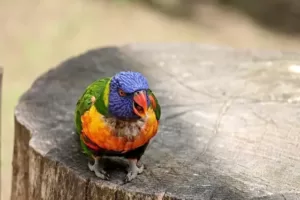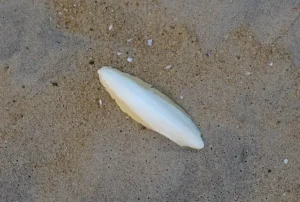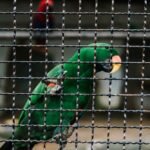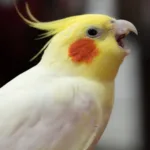Limping is not normal in parrots. It is most likely a case of a leg injury or an underlying health issue.
Some injuries are obvious to the eye such as a bent leg or swollen foot. However, in other cases, a veterinary examination may be required to better understand the situation.
There can also be other causes of lameness in parrots such as a poor diet, overgrown nails, obesity, foot conditions, and fractures.
Parrots use a number of quirks and mannerisms to get our attention, but limping isn’t one of them. If you see your parrot limping it is probably because its foot is hurting and it’s trying to walk in a way that avoids putting pressure on that leg.
Quick Navigation
What Causes Limiping In Parrots?
There are various reasons for parrot limping. It could be something that is causing discomfort in the leg muscles or it could be a health problem. The most common causes of limping in parrots are as follows:
Overgrown Toe Nails
The first thing you should check if you see your parrot limping is their toenails. If the parrot’s claw nails are too long its walk will look clumsy.
A parrot’s foot has four toes. Two of them facing forward and two pointing backward. In order for the bird to be able to walk normally, it needs to lift up its posterior toes while simultaneously bending the two toes at the front.
When the toenails are overgrown, it may not be able to lift up its foot above the ground which causes the leg to drag. If your parrot is walking in an awkward manner with its long nails digging a trench in its trail, it might be time for a nail trim.
Obesity
Parrots have strong bones and sturdy leg muscles, but they are meant to support the weight of a healthy bird. If your parrot is overweight, its legs may not be able to hold the weight properly.
As per the Merck Veterinary Manual, obese birds may become lame and develop respiratory problems due to excessive weight.
For overweight birds, exercise and smaller portions of food may be appropriate measures to reduce the fat. Encouraging physical activities such as climbing around the cage and flying can be helpful. Treats and any sort of junk food should be eliminated from their diet.
Obesity can be a serious issue in parrots and later lead to more health complications such as arthritis, fatty liver disease, and heart problems.
Fractures
Another common reason for limping is a foot injury. A broken leg is quite evident. It’s easy to see because it might look crooked or swollen.
Sometimes, it can also be a minor fracture that may not be easily visible. However, when the foot is injured, the parrot would not want to use it to avoid putting too much pressure on that area.
Fortunately, fractures heal much quicker in birds compared to other animals. Typically the bone is set in a place and a cast is applied. After the bone is stabilized, the bird may recover within a few weeks.
Injuries
Parrots’ feet have dexterity similar to human hands, and use them to climb cages, explore their surroundings, and do other activities. But even though parrots are good at managing their stance, accidents may still happen.
Small accidents like collisions, or getting caught in cage bars may only cause sprain and strains of the muscles. It may affect the normal movement of the leg bones, joints, and muscles, making walking difficult.
Bumblefoot
Also referred to as pododermatitis, bumblefoot is a serious condition that affects the feet and joints of birds. It causes inflammation and swelling of the foot which makes walking and perching painful for the parrot.
Bumblefoot infection can be treated in the early stages of its development with the help of oral antibiotics and antibiotic ointment. According to Wag Walking, in severe, surviving birds suffer chronic abscesses or need to be amputated.
Improper Perch
New owners often underestimate the importance of a proper wooden perch for their parrots. You should always use a wooden perch for your parrot as it is most comfortable for their feet and also simulates their natural habitat.
However, the reason why you shouldn’t provide an artificial perch like a dowel perch for your parrot is that it is one of the most common causes of foot problems in parrots, particularly bumblefoot.
Although bumblefoot is a bacterial infection that can arise in an unsanitary environment, hard and uneven surfaces can also contribute to this problem.
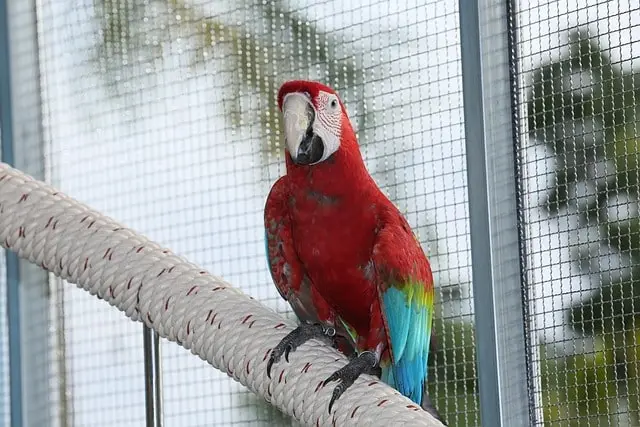
Poor Nutrition
Foot conditions may also have nutritional reasons behind them. A diet deficient in key nutrients such as vitamin A, D3, and calcium, can put parrots at higher risk of contracting infections and also weaken their immune systems.
Arthritis
Swollen and inflamed joints can hinder the full range of motion of a parrot’s legs and prevent them from walking normally. Arthritis can develop in birds because of various life situations.
If the bird suffers a traumatic injury in the joint or has been on a poor diet for years, it may contribute to the bird getting arthritis in its later years. It is more common in senior parrots though it may occur at any age.
Gout
Avian gout is a form of arthritis that affects the joint bones in birds. There are mainly two types of gout – Articular gout and Visceral gout.
Vivercal gout occurs inside the internal organs while articular gout is the accumulation of uric acid crystals in the bird’s organs, joints, and tissues, which leads to inflammation of the joints and the muscles.
If your parrot has gout, it would prefer to sit on a flat surface, often the cage floor. It would consciously avoid walking or perching as it might hurt its feet. Some other symptoms of Gout include dull feathers, dehydration, and greenish diarrhea.
Paralysis In Birds
Paralysis can occur in any part of the bird’s body, but most commonly it is seen in the legs. A parrot may suffer partial or complete paralysis.
Paralysis is usually caused by an underlying disease, so it is crucial to get a diagnosis from a vet. It may take a few weeks for the parrot to fully recover however for older birds, the recovery period may be more.
Parrots may sometimes suffer from a curled toe right after a paralysis attack. The parrot’s toe may curl up in an inward direction preventing it from using that foot at all.
Tumors
A parrot’s feet and legs could also be susceptible to tumors. Internal tumors can put pressure on the nerves which can result in partial or complete paralysis. This condition can impact the bird’s ability to move and perch normally.
What Should I Do If My Parrot Is Limping?
In certain situations, limping may require immediate veterinary attention. If your parrot has an obvious fracture or a severe injury, you will need to take it to a vet. Also, in cases, where the cause of limping does not seem to be apparent, it would require a thorough check-up.
However, if your parrot is obese and you see that it is limping, you should make dietary changes to help your bird lose weight. Limit its carbohydrate intake and avoid feeding any kind of seed mix.
Your parrot’s diet should consist of high-quality pellets and watery foods such as fruits and vegetables as they help in losing weight faster. Limping due to overgrown nails can also be managed at home.
